Lynsey Addario: In the firing line
Lynsey Addario is a remarkable photojournalist, documenting the horror of conflict and the tragedy of humanitarian crises. Her stories get under your skin and wriggle into your heart. Addario dares to tell the truths others can’t or won’t but, she knows, the world needs to see. Candide McDonald gets an amazing insight.
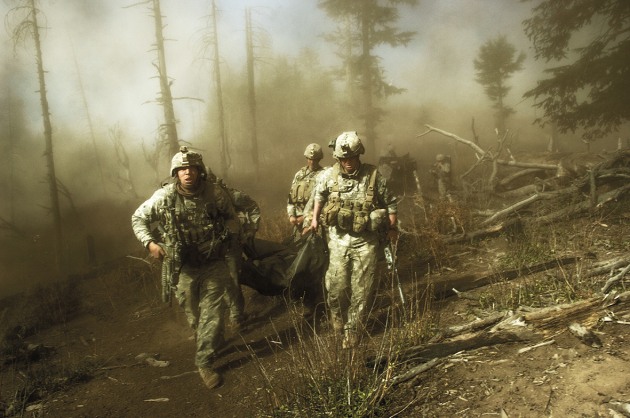
In 2009, Lynsey Addario won The MacArthur Fellowship, or “Genius Grant”, a five-year grant to individuals who show exceptional creativity in their work and the prospect for still more in the future. That same year, she was part of The New York Times team that won the 2009 Pulitzer Prize for International Reporting for her photographs in the article, Talibanistan, published in The New York Times Magazine. In 2015, American Photo magazine named her one of the five most influential photographers of the past 25 years and noted that, “Addario changed the way we saw the world’s conflicts”. She has also won the Excellence in International Reporting Award from the International Center for Journalists in Washington, DC, a Gaudium award from The Breukelein Institute in New York, and the El Mundo Journalism Award in Barcelona, Spain. In 2016, she was part of The New York Times team nominated for an Emmy Award for her collaboration in The Displaced, a series documenting the lives of three refugee children, for The New York Times Magazine.
Addario has had two books published. Ironically her first, It’s What I Do: A Photographer’s Life of Love and War, is a memoir only, illustrated by her photographs. It’s a story about being a conflict photojournalist and everything that entails, including the question, why, which Addario admits she has been asked relentlessly; the unfathomable horrors of war, which she details in vividly pictorial language; the job’s personal difficulties, which are complex and unsolvable; and the frustrations, which include the struggle between censorship and the truth. Addario’s writing is exactly like her photographs – raw, honest, uncensored, and emotive. Addario’s second book, is a curated collection of 200 powerfully dramatic photographs, through which Addario documents life in Afghanistan under the Taliban, the stark truth of sub-Saharan Africa, and the daily reality of women in the Middle East. It is punctuated with revealing essays by hand-picked writers, and her own personal letters to a friend.
Not every photographer can, or would even want to, do the work that has made Addario famous. But with that work and that fame comes wisdom. That wisdom understands that the world keeps making stories which must be told.
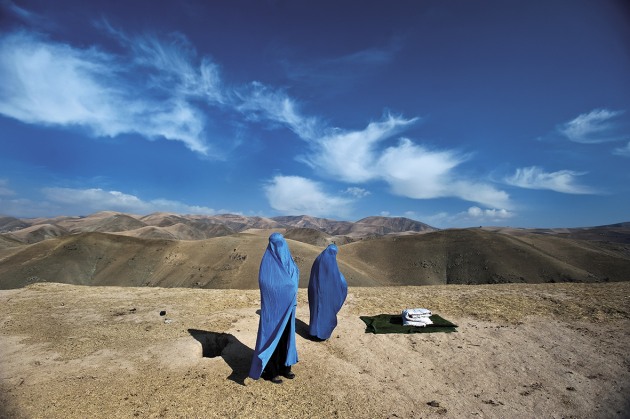
That question, why?
Addario didn’t study to become a photographer or a photojournalist. She studied international relations and Italian, and when she graduated from university, she moved to Argentina to learn Spanish. There she began to become aware of pictures in the newspapers and how you can tell stories with photographs. “It wasn’t solely an art,” she realised. “It was a way to communicate and share ideas. I became more and more curious about photojournalism and began looking at, for example, Sebastião Salgado’s Workers and Migrations series.” Her passion ignited, Addario, went into the local newspaper and “basically pestered them until they had to give me some sort of job”.
Addario stayed about a year before she moved back to New York, where she says her knowledge was enriched by the really great mentors and editors at Associated Press who hired her as a freelancer. She still regularly works for The New York Times, National Geographic, and Time magazine.
Why does she work in conflict zones and other places where horror exists? “Everyone assumes that conflict photographers are adrenalin junkies, but I got into conflict, really by accident.” Addario had moved to India in 2000 to continue her exploration of life overseas and of different cultures. She had heard about the situation for women living under the Taliban in Afghanistan. Her roommate encouraged her to document it. “You’re a woman. You’ll have access to these women. You should go there,” her friend noted. So Addario did.
While there wasn’t active fighting, war had already been rife for twenty years. It was Addario’s first experience of a place, and of lives, that conflict had torn apart. Then, September 11 happened. She had never covered war before, but “I’d had this experience in Afghanistan, so it seemed natural to go back to this place I was quite familiar with,” she says. Addario therefore covered the fall of the Taliban in Kandahar in December 2001. She returned to a new base, Mexico, where she covered events in Latin America. When it became clear that America was gearing up for war with Iraq her plans changed. “I just felt like I wanted to be there. It was a very important opportunity for someone of my generation. It was clear that my country was going to be engaged in wars in two different countries and I wanted to document that. So Addario’s primary life work – documenting conflict, “was more my want to bear witness, to be there and cover the wars that my own country was engaged in,” coupled with experience she had gathered covering crises in Afghanistan and Pakistan.
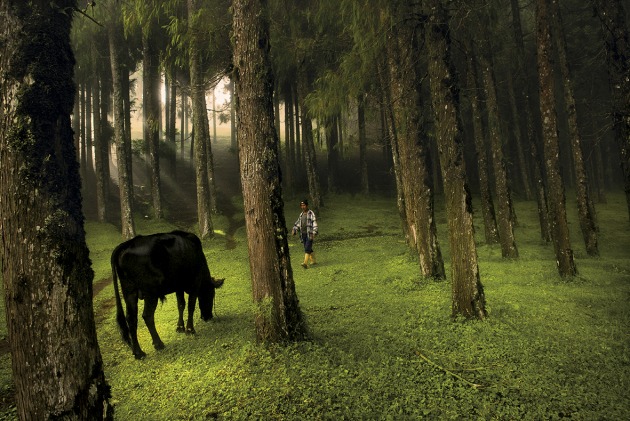
in east Bhutan, August 2007.
The question, how?
“There is no shortcut. I get e-mails from young people around the world who say, ‘Hi, I just graduated from college. I want to work for National Geographic. How do I do it?’ It makes me laugh because it took me fifteen years of hustling non-stop to start working for National Geographic and The New York Times. You really have to work hard, work for smaller publications, or get out there start telling stories – photograph – actively start documenting things that you’re interested in, or issues that you care about,” Addario advises.
If you’re interested in covering life overseas, then go, she adds. “Don’t wait for someone to send you. It’s really about being proactive, being well-read, doing your homework, researching, reaching out to people, reaching out to editors. I used to spend hours at Barnes & Noble in the ‘90s trying to figure out which magazines I wanted to pitch which story to. That’s also important – know your market, know what publications are out there for the kinds of stories you want to tell.”
Rewards of the job?
This question makes the exceptionally articulate Addario lost for words for a moment. Her first response is, “Wow!” Apparently, being rewarded is something she rarely ponders. Eventually, she continues, “I guess the rewards are the feedback I get when people express that I’ve taught them something they didn’t know or shown them a different side of a story.” She adds that she has received thanks from soldiers, with whom she has been in combat, for being there and telling their story, and from the parents of troops who have been killed for providing them with what exactly happened – which they otherwise would not have known. “Of course, the ultimate is when you can actually affect policy and enlighten policymakers as to what’s going on, on the ground. Often, when I’m working on a story, I don’t have an exact cause and effect. I don’t know if it’s my photographs exactly that are making a difference. I can only hope that. There have been stories, like my work on maternal health and maternal mortality, that clearly have. I’ve had feedback, for example, that the pharmaceutical company, Merck, started “Merck for Mothers”, in part, based on a body of work I did on a woman who died in childbirth in Sierra Leone. Those small things are incredibly gratifying, but sometimes there is no reward. I just have to believe in myself.”

along the border with Darfur, Sudan, August, 2004.
Secrets of success
“There are no secrets. I worked my arse off. I’m never complacent. I’m always hungry. I’m always a little paranoid that I’m never going to work again. Always looking for another story. I work really, really hard.” And she loves the work, Addario stresses.
She is also aware that people change over time and a role that was a perfect fit once, may not be a perfect now. “I think it’s important for me to be aware of the changes in my own interests and to be flexible around that. So if suddenly, I’m more interested in working in a certain region or in America, I listen to that, because it’s not a job where you can fake it. We throw ourselves 100% into stories and it’s important to care about them.
“Photojournalism is not just about making powerful pictures or pretty pictures,” she continues. “It’s really about being a responsible journalist and being ethical going into a situation and ensuring that my own reporting is accurate, that my sources are OK, that I have a great translator who will translate accurately, then photographing and making sure captions are correct, because we have a responsibility to provide information and a record to the public. That should be accurate.”
A photojournalist has to be honest, she stresses. Has to have integrity, be open to people, be non-judgemental, work hard, be tenacious. “It’s not an easy job. It’s a very lonely job. I’ve spent the better part of twenty-three years in hotel rooms alone. While it’s glamorous and while it’s a great honour to travel around the world, it’s also tough.”
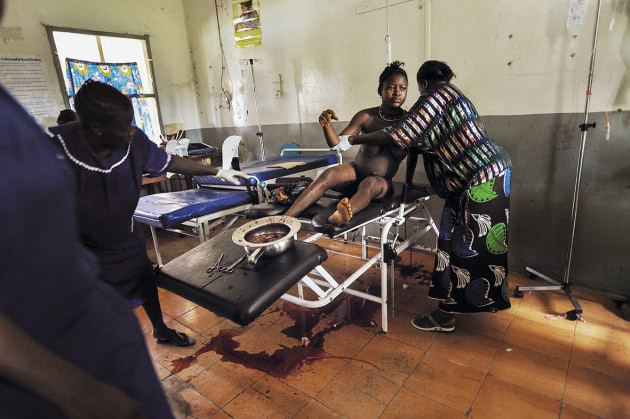
At 14, she was forced to marry a man of about 50, and delivered her first child at 15.
Mamma said repeatedly 'I am going to die' as she lay on the delivery table.
The responsibilities of photojournalism
There has always been a fundamental need for journalism in society – to document what’s happening and to provide a record, Addario notes. But she believes that this Donald Trump era has put an added burden of responsibility on journalism. Other authoritarian leaders have taken his lead, using his catchcry, “fake news”, to belittle information they don’t want public, she adds. “It’s a very dangerous time. Journalists are being threatened. One news room in the U.S. was gunned down. We need to hold people accountable. We need to provide the truth, but we also need to be responsible journalists because there’s really a lot of attention on the role we are playing and the job we are doing, so we have to be extra careful to make sure that we’re accurate.”
Women in photojournalism
Being a female photojournalist isn’t easy. Addario knows first-hand that it’s still seen as a ‘man’s job’. “Ideally, a woman’s role should equal to that of a man. It shouldn’t even be a question any more. Unfortunately, it still is a question,” Addario remarks. “I see a lot of women photojournalists in the U.S., for example, but in war zones I don’t see that many actively working. I still see white men as the predominant visual voice. And I do think that’s a problem, because women, people of colour, and locals need to be telling their own stories.” There are some stories that are very sensitive, she adds, and it’s culturally insensitive to send a man. “But I still see photo editors sending men on rape stories in the Muslim world, for example. That seems grossly insensitive to me, knowing the culture. Editors have to send more women, send more people of colour, and also provide that window for them to enter the playing field.”

A first at last: Addario’s photobook
It has taken Addario more than twenty years to publish her first photobook. Astonishingly, she always felt as though she wasn’t yet good enough. She didn’t feel ready. Didn’t feel her work was ready. “I think one of the great things about photography is that it doesn’t get dated, so I could let it sit and see what bodies of work rose to the top, which bodies of work really resonated with me over time. That’s not something that’s immediate. I remember, for example, for two years during the war in Iraq, I was shooting and filing that day, and never really looked back at all the out-takes because I didn’t have time. I wasn’t even sleeping, I was pretty much just on assignment all the time for The New York Times and Time [magazine].”
After the memoir, she recounts, people started asking her why she hadn’t done a photobook. “The memoir was what I wanted to do at the time. It was after Libya and I felt I needed to process a lot of the things I’d seen and been through.” The questions made her feel that it was time. “And then it was all very overwhelming. I’m the worst editor of my own work. I hate looking back at my pictures. I’m never happy with them. I’m always tortured. So, I was given the name of book designer and editor, Stuart Smith, in London and I went in to see him. He was familiar with my work and I dumped about a hundred thousand pictures – twenty-three years of photographs – on him.” That was about two years ago. The pair went back and forth from then, without a concrete timeline. “But when my memoir sold to Warner Bros. to option the rights to become a film, we felt it would be nice to have a photobook to coincide with that if it ever comes out, because most people will want to see that. Then, Ann Godoff, editor of my memoir at Penguin Random House in New York wanted to publish the photobook. She stood behind me and told me that she could do it.” With that burst of wind beneath her wings, Of Love and War, was made. “I feel very lucky,” she says. “It’s expensive to do a photobook, and it’s not easy, but I had a fair amount of time to work on it without the pressure.”
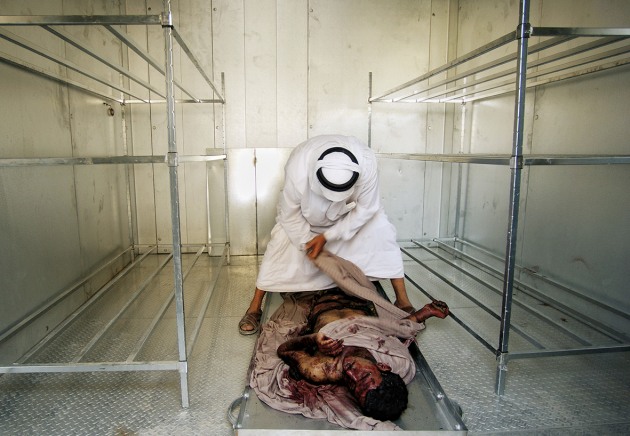
after he was killed in a car bomb attack in Baghdad, Iraq, June 2004.
That time allowed her to make it a bit unique, from an idea dreamed up by Addario and her long-time friend, Suzy Hansen, who also helped her edit the memoir. “I actually went back and included some of my old letters, handwritten to an old friend of mine, Vineta Plume, and also to my mother, when I was first becoming a photographer and discovering photography.” Plume had saved every letter that Addario had ever written to her. “They’re very intimate – very raw and very personal letters from the middle of the war in Iraq. A little nerve-wracking to put into a book, but I think it’s important. The photographs are the process of becoming a photographer, so hopefully these letters will shed some light on that.” Addario also invited some journalists she had worked with over the years to write small passages – whatever they wanted to say. “These include Dexter Filkins who writes for The New Yorker, Lydia Polgreen who heads up the Huff Post, Christie Turlington who does extraordinary work fighting for maternal health, Aryn Baker from Time magazine and John Clinard, a soldier with whom I was embedded in the Korengal Valley in Afghanistan – I do an interview with him.”
Thousands of photographs. Thousands of stories. Harrowing, enlightening, policy-changing, attitude-changing, and, above all, honest, records of life that people need to see. This is what Addario has given the world. Hopefully, that work will inspire others to dare to follow in her footsteps. Addario hopes that many of those will be women and locals. She has a passion for the truth.
Contact
Lynssey Addario
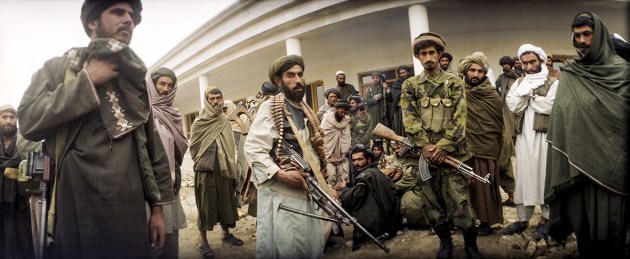
in Kandahar, December, 2001.

Get more stories like this delivered
free to your inbox. Sign up here.

